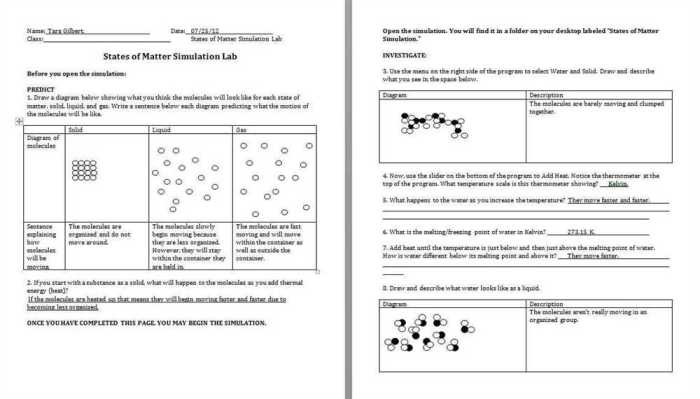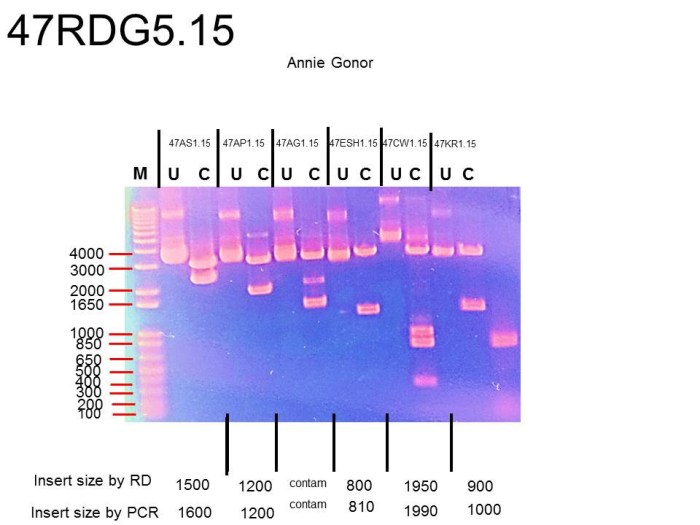Pogil the statistics of inheritance – POGIL: The Statistics of Inheritance delves into the captivating realm of genetic inheritance, where the interplay of dominant and recessive alleles shapes the tapestry of life. Through the lens of Punnett squares and probability, we unravel the mysteries of inheritance, uncovering the intricate mechanisms that govern the passing of traits from one generation to the next.
From the fundamental principles of Mendelian inheritance to the complexities of polygenic traits, this comprehensive guide explores the statistical underpinnings of inheritance, illuminating the role of genetics in shaping our physical and biological characteristics.
Inheritance Patterns

Inheritance patterns refer to the transmission of genetic traits from parents to offspring. Understanding these patterns is crucial in predicting the likelihood of inheriting specific traits or disorders.
A fundamental concept in inheritance is the distinction between dominant and recessive alleles. Dominant alleles are expressed in the phenotype (observable characteristics) even when paired with a recessive allele. Recessive alleles, on the other hand, are only expressed when paired with another recessive allele.
Autosomal Dominant Inheritance
In autosomal dominant inheritance, a dominant allele on one of the two copies of a gene is sufficient to produce the trait. Individuals with one dominant allele and one recessive allele are called heterozygous and exhibit the dominant trait. Those with two copies of the recessive allele are homozygous recessive and do not show the dominant trait.
- Example:Huntington’s disease is an autosomal dominant disorder caused by a mutation in the HTT gene. Individuals with one copy of the mutated allele will develop the disease.
Autosomal Recessive Inheritance
In autosomal recessive inheritance, both copies of the gene must carry the recessive allele for the trait to be expressed. Heterozygous individuals are carriers and do not exhibit the trait. Only homozygous recessive individuals show the recessive trait.
- Example:Cystic fibrosis is an autosomal recessive disorder caused by mutations in the CFTR gene. Individuals with two copies of the mutated allele will have cystic fibrosis, while carriers have one normal and one mutated allele.
Pedigrees
Pedigrees are diagrams that represent the inheritance of traits within a family. They use symbols to indicate individuals, their relationships, and the presence or absence of specific traits.
- Autosomal Dominant Inheritance Pedigree:Individuals with the dominant trait are typically shaded or filled in. The pattern of inheritance shows vertical transmission, with affected individuals having at least one affected parent.
- Autosomal Recessive Inheritance Pedigree:Individuals with the recessive trait are typically shaded or filled in. The pattern of inheritance may show horizontal transmission, with unaffected parents having affected children.
Punnett Squares: Pogil The Statistics Of Inheritance

Punnett squares are diagrams that predict the probability of inheriting specific traits by displaying the possible combinations of alleles that can be passed on from parents to offspring. Each parent contributes one allele for each gene, and the Punnett square shows all the possible combinations of these alleles.
Creating Punnett Squares
To create a Punnett square, first determine the genotypes of the parents. A genotype is the genetic makeup of an individual for a particular gene. For example, if we are considering the inheritance of eye color, the genotype of one parent might be BB (homozygous dominant for brown eyes), while the genotype of the other parent might be bb (homozygous recessive for blue eyes).Once
the genotypes of the parents are known, we can create a Punnett square to predict the possible genotypes of their offspring. The alleles from each parent are placed along the sides of the square, and the possible combinations of alleles are placed in the boxes.For
example, the Punnett square for the inheritance of eye color would look like this:“`| B | B ||—|—|| b | Bb | Bb || b | Bb | Bb |“`This Punnett square shows that there are four possible genotypes for the offspring: BB (homozygous dominant for brown eyes), Bb (heterozygous for brown eyes), Bb (heterozygous for blue eyes), and bb (homozygous recessive for blue eyes).
Using Punnett Squares to Determine the Likelihood of Inheriting Specific Traits
Punnett squares can be used to determine the likelihood of inheriting specific traits by calculating the probability of each possible genotype. For example, in the case of eye color, the probability of inheriting brown eyes is 75% (BB + Bb), while the probability of inheriting blue eyes is 25% (bb).Punnett
squares are a valuable tool for understanding the inheritance of traits. They can be used to predict the probability of inheriting specific traits, and they can also be used to identify the genotypes of individuals.
Probability in Inheritance
Probability plays a pivotal role in comprehending inheritance patterns. It allows us to predict the likelihood of specific traits being passed on from parents to offspring. The principles of independent assortment and segregation of alleles form the foundation for understanding probability in inheritance.
Independent assortment states that alleles of different genes assort independently of one another during gamete formation. This means that the inheritance of one gene does not influence the inheritance of another gene. Segregation of alleles refers to the separation of alleles for a particular gene into different gametes.
Each gamete carries only one allele for each gene.
Calculating Probabilities
Using probability, we can calculate the chances of inheriting specific traits. Consider a monohybrid cross, where one parent is homozygous dominant (AA) for a particular trait and the other parent is homozygous recessive (aa). The probability of the offspring inheriting the dominant allele (A) from the homozygous dominant parent is 100%. The probability of inheriting the recessive allele (a) from the homozygous recessive parent is also 100%.
In a dihybrid cross, where two different genes are being considered, the probability of inheriting specific combinations of alleles can be calculated using the product rule. The product rule states that the probability of two independent events occurring together is equal to the product of their individual probabilities.
Exceptions to Mendelian Inheritance
Mendelian inheritance, as proposed by Gregor Mendel, provides a fundamental framework for understanding the transmission of traits from parents to offspring. However, certain exceptions to these principles have been observed, resulting in inheritance patterns that deviate from the classical Mendelian ratios.
These exceptions include incomplete dominance, codominance, and multiple alleles.
Incomplete Dominance
In incomplete dominance, neither allele is fully dominant over the other. As a result, the heterozygous genotype exhibits an intermediate phenotype that is distinct from both homozygous genotypes. For example, in the case of flower color in snapdragons, the homozygous genotype for red flowers (RR) produces red flowers, while the homozygous genotype for white flowers (rr) produces white flowers.
However, the heterozygous genotype (Rr) produces pink flowers, which is an intermediate phenotype between red and white.
Codominance
In codominance, both alleles are fully expressed in the heterozygous genotype. This results in a phenotype that exhibits characteristics of both homozygous genotypes. For example, in the case of blood type in humans, the allele for type A blood (IA) and the allele for type B blood (IB) are codominant.
Individuals with the heterozygous genotype (IAIB) have both type A and type B antigens on their red blood cells, resulting in the AB blood type.
Multiple Alleles, Pogil the statistics of inheritance
In multiple alleles, there are more than two possible alleles for a particular gene. This can result in a wide range of phenotypes, as each allele may have a different effect on the trait. For example, in the case of the ABO blood group system in humans, there are three alleles: IA, IB, and i.
The IA and IB alleles are codominant, while the i allele is recessive. This results in four possible blood types: A, B, AB, and O.
Complex Inheritance
Complex inheritance refers to the inheritance of traits that are influenced by multiple genes and environmental factors. These traits often exhibit a continuous range of variation, rather than distinct categories.
Polygenic Inheritance
Polygenic inheritance occurs when a trait is influenced by the combined effects of multiple genes. Each gene contributes a small effect to the overall phenotype, and the cumulative effect of all the genes determines the trait’s expression. For example, human height is a polygenic trait influenced by the combined effects of several genes, each contributing a small amount to the overall height.
Environmental Influences
Environmental factors can also significantly influence inherited traits. These factors include nutrition, temperature, light exposure, and other environmental conditions. For example, the expression of coat color in Himalayan rabbits is influenced by both genetics and temperature. The rabbit’s fur is white at birth, but as it ages, the fur on its extremities (ears, nose, tail, and feet) turns black.
This is because the enzyme responsible for producing the black pigment is only active at lower temperatures.
Examples of Complex Traits
Many human traits are influenced by both genetic and environmental factors, including:
- Height
- Weight
- Skin color
- Eye color
- Intelligence
- Behavior
Applications of Inheritance Statistics
Inheritance statistics play a crucial role in genetic counseling and medicine by providing a framework for understanding the transmission of genetic traits and predicting the risk of inherited diseases.
One of the primary applications of inheritance statistics is in genetic counseling. Genetic counselors use statistical models to assess the probability of an individual inheriting a particular genetic condition based on their family history and genetic testing results. This information is essential for making informed decisions about reproductive planning, medical management, and lifestyle choices.
Use of Genetic Testing to Identify Inherited Diseases and Predict Disease Risk
Genetic testing has revolutionized the field of medicine by allowing healthcare professionals to identify individuals at risk for inherited diseases and predict the likelihood of developing these conditions.
- Carrier screening:Genetic testing can identify individuals who are carriers of a recessive genetic mutation, even if they do not exhibit any symptoms of the disease. This information is crucial for preventing the transmission of genetic disorders to offspring.
- Predictive testing:Genetic testing can predict the risk of developing certain inherited diseases, such as Huntington’s disease or certain types of cancer. This knowledge empowers individuals to make informed decisions about their health and future.
- Prenatal testing:Genetic testing during pregnancy can detect genetic abnormalities in the fetus, allowing parents to make informed decisions about the continuation of the pregnancy and prepare for any necessary medical interventions.
Examples of How Inheritance Statistics Have Been Used to Improve Healthcare Outcomes
- Tailored medical treatments:Inheritance statistics have guided the development of personalized medical treatments based on an individual’s genetic profile. For example, genetic testing can identify individuals who are more likely to respond to specific medications or who are at a higher risk of developing adverse reactions.
- Improved disease prevention:Inheritance statistics have informed public health policies aimed at preventing inherited diseases. For instance, screening programs for genetic conditions like cystic fibrosis and sickle cell anemia have led to early detection and treatment, significantly improving the quality of life for affected individuals.
- Advancements in gene therapy:Inheritance statistics have played a vital role in the development of gene therapy techniques, which aim to correct or replace faulty genes. Statistical models have been used to assess the safety and efficacy of gene therapies, leading to promising new treatments for inherited diseases.
General Inquiries
What is the difference between dominant and recessive alleles?
Dominant alleles are expressed in an individual’s phenotype even if only one copy of the allele is present, while recessive alleles are only expressed when two copies are present.
How do Punnett squares help predict inheritance probabilities?
Punnett squares are a visual tool that shows all possible combinations of alleles that can be inherited from parents and calculates the probability of each combination occurring.
What are exceptions to Mendelian inheritance?
Exceptions to Mendelian inheritance include incomplete dominance, codominance, and multiple alleles, where the inheritance patterns deviate from the simple dominant-recessive model.